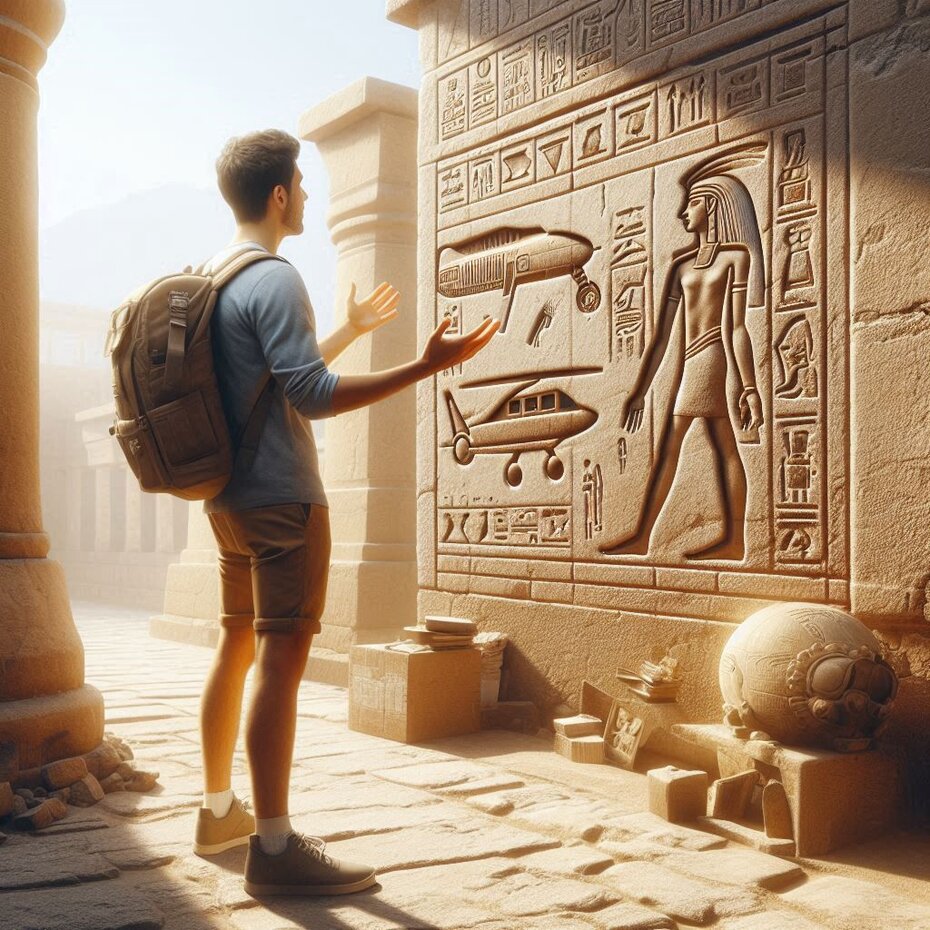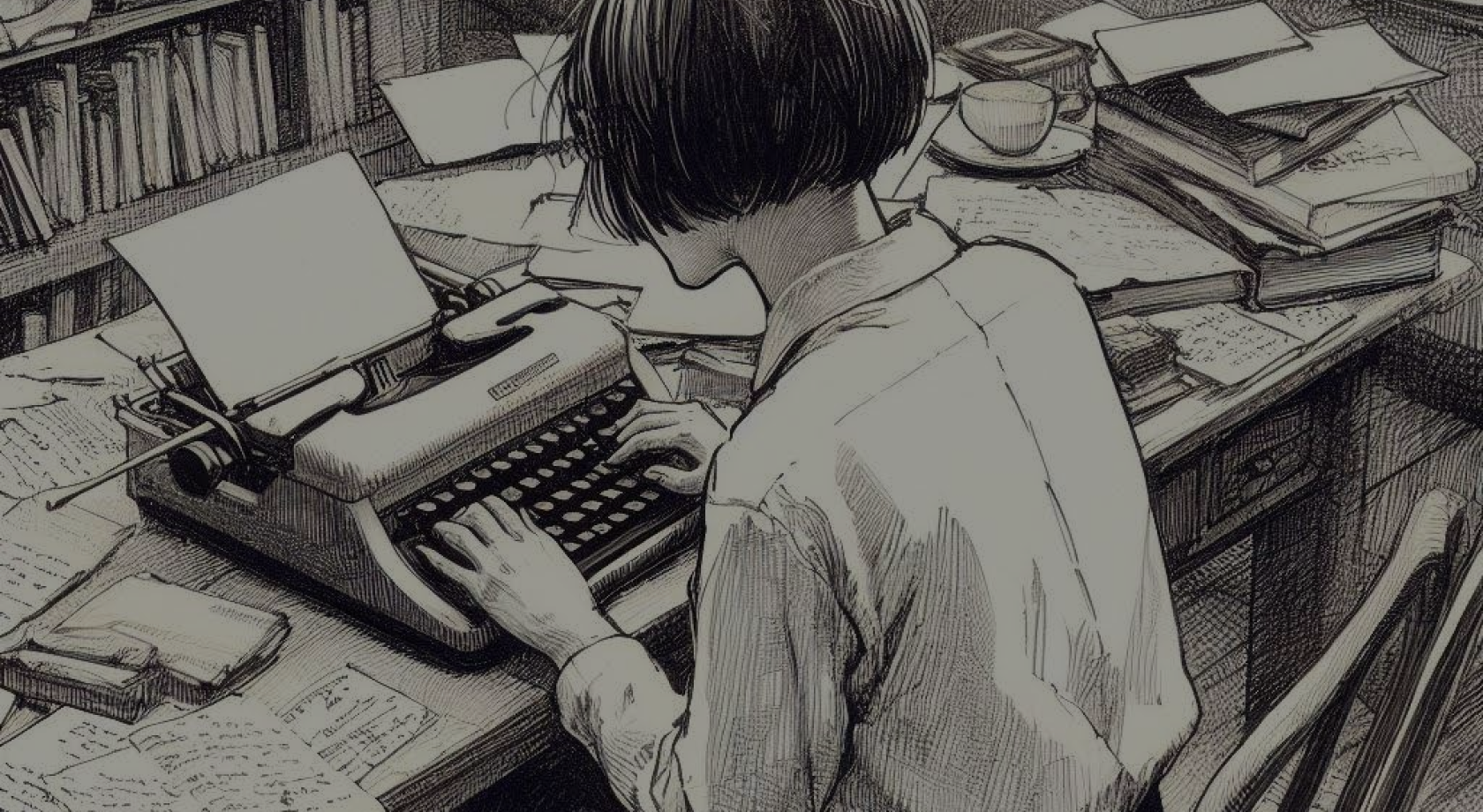The unusual life of Dorothy Eady: priestess or insane? (chapter 2)

At 31, Dorothy was finally living her dream! Living in the shadows of the ruins of Giza, located on the outskirts of Cairo, she was dazzled by her new routine. She spent sleepless nights burning incense, praying to the gods of antiquity and making offerings to the Sphinx. She spent so many hours a day wandering around the pyramids that she was noticed by the team of archaeologists working nearby.
Salim Hassan was the archaeologist in charge of the excavations at Giza. He had just been chosen to head Egypt's Antiquities Service, which controlled the monuments of the Nile Valley. As soon as they met her, he and his team were impressed by Dorothy's knowledge of the art and language of ancient Egypt and invited her to join the team. Despite having no formal education, she was an energetic and vivacious woman who went on to contribute to Dr. Hassan's research. She also became a talented writer, producing essays, monographs and books of scientific value.
When Dr. Hassam's team left, she was immediately employed by another archaeologist working in the region. Everyone admired this eccentric but discreet woman, who didn't share her supernatural experiences except with her close friends. If we know her story in depth today, it's thanks to the fact that she recorded all the events of the day in her diaries.
The stories about Dorothy's unusual life, always surrounded by researchers and peasants, would soon reach the ears of her ex-husband's family, causing her to lose custody of her son at the age of 35. She would still have to wait a few more years to live according to her own ideas. She, who had spent her entire life surrounded by the authority of her father, her husband and her teammates, only gained her freedom with the arrival of the menopause, that phase of life when women become invisible and the world forgets about them.
When she reached the age of 52, Dorothy finally visited Abydos, the city of her dreams, where she believed she had been born and raised in her past life. She arrived in this city on a full moon night, and immediately went to the gates of the Temple of Sety, where she spent the night burning incense sticks and praying to the gods Isis and Osiris, illuminated only by the moonlight that filtered through the tops of the palm trees. In all her life she had never experienced a moment more charged with magic than that!
Four years later, she moved to Abydos for good, settling in a hovel next to the walls of the Temple of Sety. The people soon began to call her Omm Sety, the mother of Sety. However, the stories of this woman who claimed to be the reincarnation of a priestess from the Temple of Sety deeply irritated the chief inspector of the Department of Antiquities. Determined to unmask her, he took her to the temple one dark night. This temple, which until then had never been visited by the public, nor exhibited in scientific publications or popular magazines, remained a mystery to everyone.
When the two of them entered the temple, the inspector proposed the following game: he would give a brief description of the drawings carved on one part of the mural and she would locate them in the dark. He was surprised to see that in every case, she immediately located the part of the mural to which he was referring, without hesitation. This was an absolutely impossible feat for someone like her, who had never set foot in that temple!
Soon, she was taking part in healing and magic ceremonies in the local community. Dorothy was very well adapted to life among the ordinary people, even being able to charm snakes and feed them like pets. Some considered her a witch and were afraid of her powers.
She knew the land where she lived very well, and thanks to her “sixth sense” she was able to contribute enormously to the archaeological excavations carried out on the site. The day she told her colleagues about the gardens where she had met her lover in her past life, they told her she was wrong: there were no gardens there. She replied that there was a garden buried nearby, and pointed with her finger to where they should dig. What a surprise when they found the garden! In addition to its location, she was able to foresee other specific features of the garden, such as the existence of canals and the position of the columns.
They say that in her old age, she used to wander around the temple touching specific stones, as if trying to remember the exact sequence in which this should be done. To anyone who asked her what she was doing, she would talk about a portal, a passage between two worlds. In addition, she has often mentioned a Hall of Records that would be located beneath the Temple of Sety, but it has never been excavated. Could it be true?
On turning 60, the compulsory retirement age for Egyptians, Dorothy was presented with an award. You're probably guessing that she received a cash bonus or a gold watch as a token of appreciation for her valuable contribution to archaeological studies in the Nile Valley. Not at all! What she received from the government was the right to continue working for another five years. After all, what would a gold watch be to someone who had been the Pharaoh's favorite?
When she finally retired at the age of 65, she received a meager pension of U$35, which she supplemented by selling handicrafts to tourists and giving guided tours of the ruins. Shortly after her death at the age of 77, the stories she told about her past life were internationally recognized when the NY Times said she was one of the most intriguing and convincing cases of reincarnation in the modern history of the Western world.
A few years later, a tourist accidentally noticed hieroglyphics carved above a portico of the temple, which seemed to represent a spaceship and a helicopter. Colorful paintings were also identified that resembled the coil invented by Nikola Tesla to transmit electricity without the need for electrical wiring. And on the wall opposite this painting, there was another one showing this same coil connected to the Neshmet Barge of Osiris. Some said that this figure seemed to allude to Einstein's wormhole, a time-space shortcut capable of connecting two distant points in the Universe. Could this be the portal that Dorothy Eady talked about so much?
Today, when commenting on these discoveries, archaeologists draw attention to the fact that Abydos has always been considered a sacred place, where the entrance to the world of the Beyond was located; the place where Osiris, the god of the afterlife and the judgment of the dead, was buried; a place associated with the journey to another realm of existence.
For more information on this subject, click here to watch the excellent video produced by The Universe Inside You.
Translated with DeepL.com (free version)
Voltar
